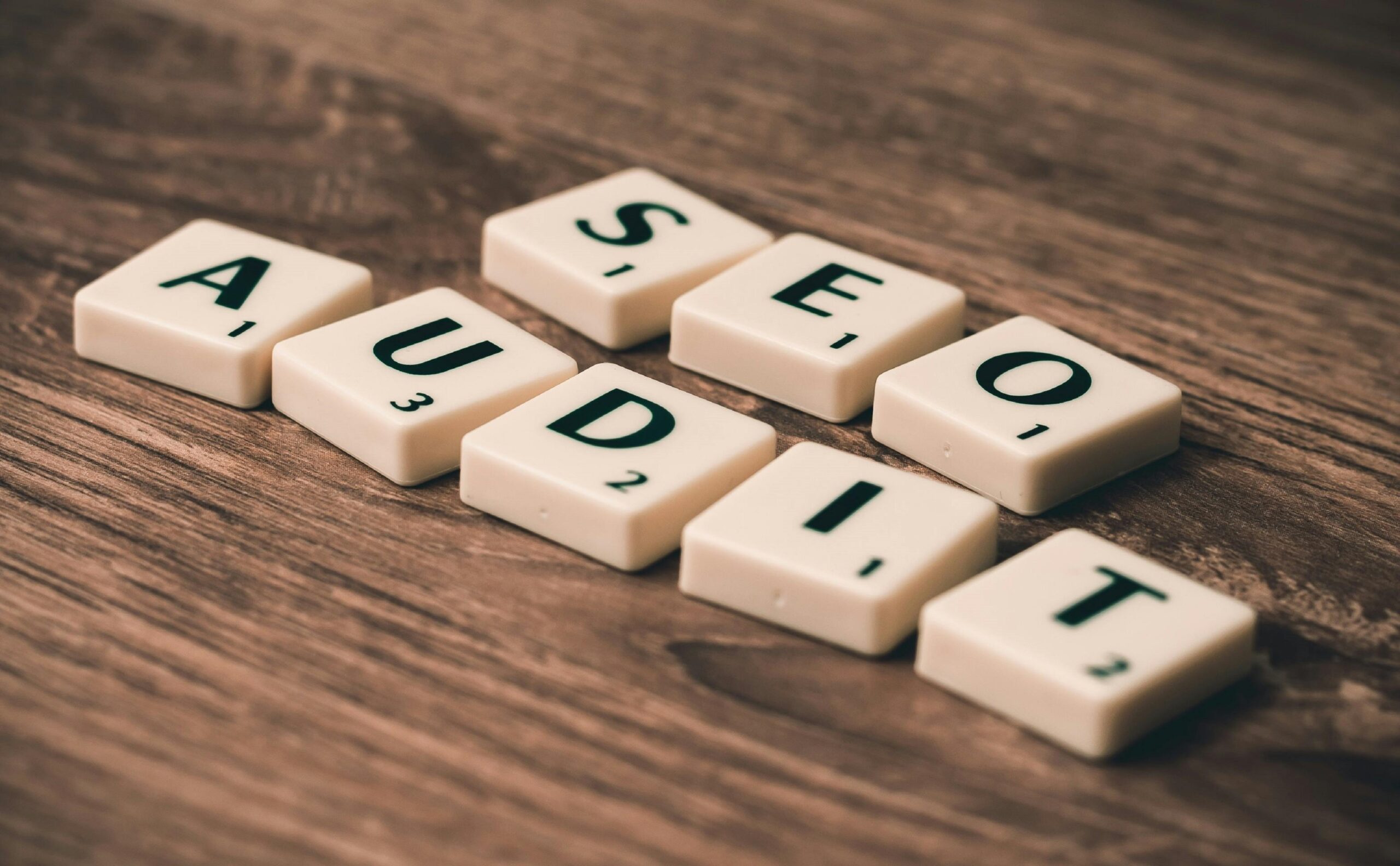Have you ever wondered why your website isn’t showing up on Google, even after all your hard work? The problem might be hidden issues that you can’t see — and that’s where an SEO audit comes in.
An SEO audit is like a health checkup for your website. It finds small errors that can hurt your rankings and stop people from finding you online.
In this blog, as an SEO expert, I’ll uncover the secrets behind a proper SEO audit and show you how to spot problems before they grow bigger. Don’t worry — I’ll keep everything simple, clear, and easy to follow!
What Is an SEO Audit and Why It Matters
An SEO audit is like a complete checkup for your website to see how well it is performing on search engines like Google.
Just like you visit a doctor to find hidden health problems, an SEO audit finds hidden issues on your website that could hurt your rankings.
Some people also call it a website SEO review, SEO site analysis, or a search engine optimization checkup — they all mean the same thing.
During an SEO audit, experts look at many parts of your website, such as page speed, mobile-friendliness, broken links, keyword usage, and even how easy your site is to navigate.
For example, if your website takes too long to load, an SEO audit will highlight that as a problem. Or, if your pages are missing important keywords that people search for, the audit will point it out.
Imagine you have a beautiful shop, but the doors are half-closed, lights are dim, and signs are missing. Customers might walk past without even noticing it. A website without an SEO audit is just like that — invisible to visitors and search engines!
Why does an SEO audit matter?
Because if your site has technical errors, poor content structure, or bad links, Google will not rank your website well.
That means fewer visitors, fewer clicks, and fewer opportunities. Regular SEO audits help you fix these problems early so your website can stay healthy, rank higher, and reach more people.
In short, an SEO audit is the first step toward making your website stronger, faster, and easier for people (and search engines) to find.
Accessibility/Find ability Issues
 In SEO, accessibility and find ability mean how easily search engines and users can access and find the pages on your website.
In SEO, accessibility and find ability mean how easily search engines and users can access and find the pages on your website.
If search engines like Google can’t properly see or read your site, they won’t show it in search results — and your website will miss out on visitors. That’s why fixing accessibility and find ability issues is so important.
One common factor is the robots.txt file. This small text file tells search engines which parts of your site they are allowed to visit and which parts to avoid. If your robots.txt is not set up correctly, you might accidentally block important pages from showing up on Google!
Another key element is the XML sitemap. Think of an XML sitemap as a map for search engines — it lists all the important pages on your website. If you don’t have a sitemap, or if it’s outdated, search engines might miss important pages, making your site harder to find.
A custom 404 page is also very helpful. A 404 error happens when someone tries to visit a page on your site that doesn’t exist. Without a friendly and useful custom 404 page, visitors might get confused and leave your site quickly, which can hurt your SEO. A good 404 page should guide users back to your homepage or offer helpful links to keep them engaged.
On-Page SEO Check
On-Page SEO means making changes directly on your website pages to help them rank better on Google. It’s like decorating a shop so that more customers come inside.
An On-Page SEO Check is when you review important parts of each page to make sure everything is working properly for both users and search engines.
Here are the key factors to look at:
Title Tag: This is the title of your page that appears in Google search results. It should include your main keyword and be clear and attractive.
Meta Description: A short summary of your page shown under the title in search results. A good meta description can make people want to click on your link.
Headings (H1, H2, H3, etc.): These help organize your content. The H1 is usually the main title on the page, and there should be only one. Other headings (H2, H3) break your content into smaller, easier-to-read sections.
Keyword Usage: Your main keyword should appear naturally in your content, titles, headings, and even image names. But don’t overuse it — keep it natural.
URL Structure: Your page URL should be short, clean, and include important keywords. For example: www.example.com/seo-tips is better than www.example.com/page?id=1234.
Internal Linking: Link to other pages on your website. It helps users and search engines explore more of your content.
Image Optimization: Add “alt text” to images, so search engines can understand what the images are about.
There are some other factors of on-page SEO. Doing a regular On-Page SEO Check keeps your website strong, organized, and easy for Google (and visitors!) to understand. It’s one of the easiest ways to improve your site’s ranking.
URL Analysis
When it comes to SEO, your website’s URL (the address of a web page) plays an important role in helping both users and search engines understand what your page is about.
URL Analysis means checking if your URLs are clean, clear, and optimized for the best possible search ranking.
One important factor is the URL delimiter check. In a good URL, words should be separated by hyphens (-), not underscores (_) or other symbols. For example,
✅ www.example.com/seo-tips is better than
❌ www.example.com/seo_tips.
Hyphens are easier for Google and readers to understand.
Another key factor is URL friendliness. A friendly URL is short, simple, and easy to read. It should describe the page content clearly. For instance,
✅ www.example.com/best-seo-tools
is much better than
❌ www.example.com/page?id=4532.
Keywords in your URL are also very important. Including relevant keywords in the URL can help your page rank higher.
For example, if your article is about SEO tips, having the words “SEO” and “tips” in your URL makes it more relevant to search engines.
Other small but important checks include:
- Avoiding capital letters (use small letters for consistency).
- Not using too many folders or slashes (keep it simple).
- Making sure old broken URLs redirect properly to new pages (using 301 redirects).
Architecture Checks
In SEO, website architecture means how the pages of your website are organized and connected.
A strong, simple website structure makes it easier for both users and search engines like Google to find and understand your content. Architecture checks help you spot problems that could confuse visitors or hurt your rankings.
One important factor to check is breadcrumbs. Breadcrumbs are small links (usually at the top of a page) that show users where they are on the site. For example, Home > Blog > SEO Tips. Good breadcrumbs help visitors navigate easily and help Google understand your site’s structure better.
You need to do a header analysis. Headers are the top sections of your website that often include your logo, main navigation menu, and sometimes a search bar. A clean, organized header helps users find what they’re looking for quickly. From an SEO view, clear navigation helps search engines discover your important pages faster.
Footer analysis is also important. The footer is the bottom part of your website. A good footer includes useful links, contact information, privacy policies, and maybe even a site map. A messy or missing footer can confuse users and make your site seem unprofessional.
Other important architecture checks include:
- Making sure important pages are no more than 3 clicks away from the homepage.
- Checking that your site uses a logical hierarchy (Main Category > Subcategory > Page).
- Ensuring mobile users can easily navigate your site.
Link Issues
In SEO, link issues refer to problems related to the hyperlinks on your website. Links are an important part of how search engines like Google understand and rank your website.
When there are link issues, they can hurt your website’s performance and user experience. Here are some common link issues you need to check for:
Broken links are links that no longer lead to a valid page. When users click on them, they get an error, usually a “404 Page Not Found” message. This can frustrate visitors and hurt your SEO. Broken links are a red flag to search engines and can lower your website’s rankings. It’s important to regularly check and fix or remove broken links to maintain a smooth user experience.
Just like broken links, broken images are images that don’t display because their source URL is incorrect or the image is missing. This can make your site look unprofessional and lower the user experience. Search engines also take into account how your website functions, so broken images can negatively affect your SEO.
Your website logo should link to the homepage. If it doesn’t, users may get confused and have a harder time navigating your site. This simple navigation feature is also important for SEO because it helps search engines understand the site structure.
Anchor text is the clickable text in a hyperlink. It should describe the page it links to clearly. For example, “Click here” isn’t as helpful as “SEO tips guide.” Using descriptive anchor text helps both users and search engines understand what the linked page is about.
Schema Markup
Schema Markup is a type of code that you add to your website to help search engines understand your content better. It’s like providing extra details or labels to your content, making it easier for search engines to show the right information in search results.
When you use schema markup, you tell search engines exactly what your content is about. For example, if you have a recipe, schema markup helps search engines know that your page contains a recipe and can show extra details like the cooking time or ingredients in the search results. This can lead to rich snippets, which are more detailed and attractive search results.
There are different types of schema markup, such as:
- Article Schema: For blog posts and news articles.
- Product Schema: For e-commerce sites to show product details like price and availability.
- Event Schema: For events, so search engines can show event details like date, location, and time.
An SEO audit is an essential process for identifying and fixing issues that could be preventing your website from ranking higher on search engines. By regularly performing audits, you can ensure that your site is optimized, user-friendly, and ready to meet both search engine and user expectations.
Whether it’s improving on-page SEO, fixing broken links, or ensuring your site architecture is solid etc. each step plays a crucial role in boosting your website’s visibility. Remember, SEO is a long-term investment, and an effective audit is the first step towards better rankings, more traffic, and ultimately, a stronger online presence. Take the time to perform regular audits, stay updated with SEO trends, and watch your website grow.





